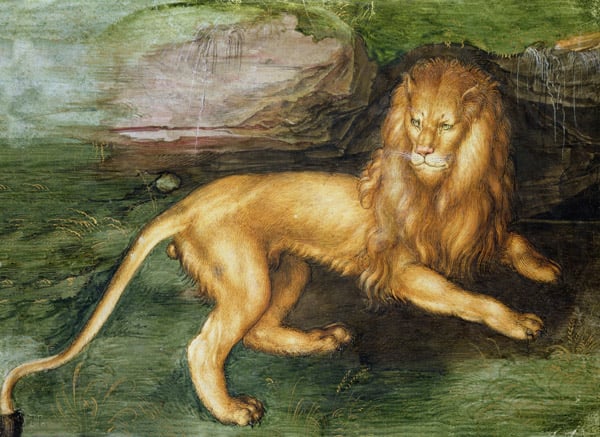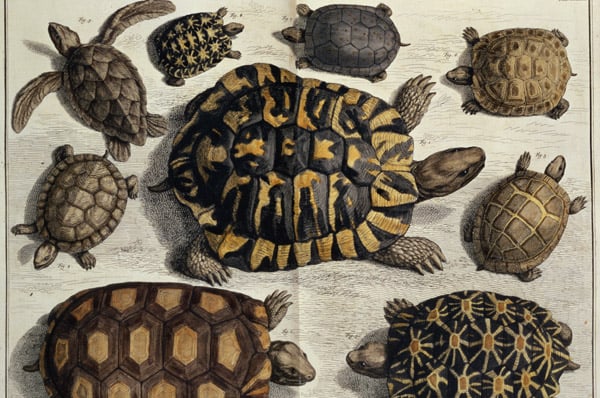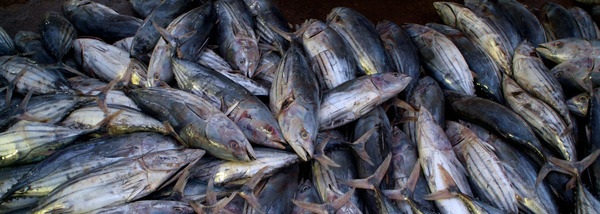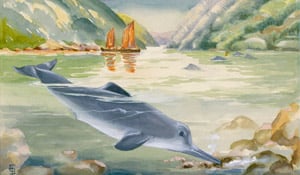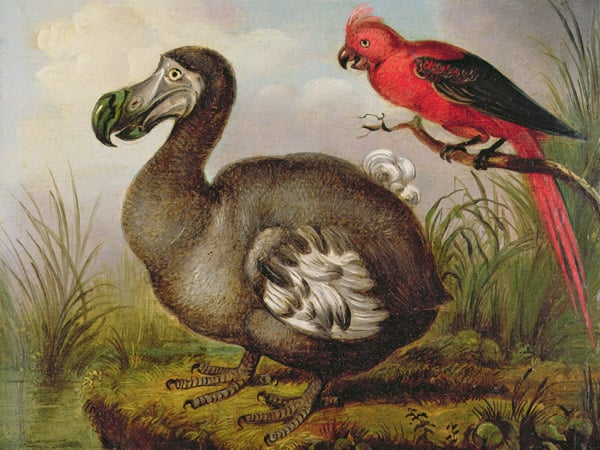
Extinct! Animals we may no longer see in our lifetime
In July this year, a worldwide furore was sparked concerning the death of a beloved lion. Cecil was a 13-year old male Southwest African lion and the best-known animal at Hwange National Park in Zimbabwe. The magnificent beast was slain when an American dentist paid a professional hunter $50,000 to help kill him. Barbaric actions in the name of a vain and meaningless trophy.
Cecil made headlines due to his status as a major attraction, but the fact is that this is happening to animals across the world on a regular basis. 2015 has already seen the Eastern Cougar declared extinct thanks to hunters and at present there are only four northern white rhinos left on the planet, with the only male being too old to breed.
In view of the bleak outlook for some of the world’s most precious creatures, explore images of extinct and endangered animals that highlight our need to take protective actions.
1. African Lions & Wild Cats
Lions have been an important symbol for thousands of years and appear as a theme in cultures across Europe, Asia, and Africa. They are positively depicted in popular culture as creatures that appear strong, but gentle at the same time. They are consistently regarded as “king of the jungle” or “king of the beasts”, and as such they are emblematic of royalty and bravery.
Their fearsome yet beautiful nature means that the wild cats are often sought after by poachers as trophies or for their fur. Sport hunting, in addition to habitat loss and the bushmeat trade, has caused African lions to decline in numbers by 50% since three decades ago, and they could face extinction by 2050. Other cats that have gone extinct in the last 100 years include the Formosan Clouded Leopard, the Caspian Tiger and the Barbary Lion.
2. Pinta Island Tortoise & Turtles
In popular culture, turtles are considered to be easygoing, patient, and wise creatures. Due to their long lifespan, slow movement, sturdiness, and wrinkled appearance, they are an emblem of longevity and stability in many cultures around the world. Painters, photographers, poets, songwriters, and sculptors regularly use them as subjects for their works.
Millions of sea turtles have been killed over the past century to feed the fashion for tortoiseshell jewellery, glasses, ornaments, instruments and other items. The international trade has been banned for nearly 40 years, yet a black market continues to thrive in Asia, notably China and Japan, and in the Americas. The turtles can take over 30 years to reach the breeding age, meaning that many are killed before they ever have the chance to reproduce.
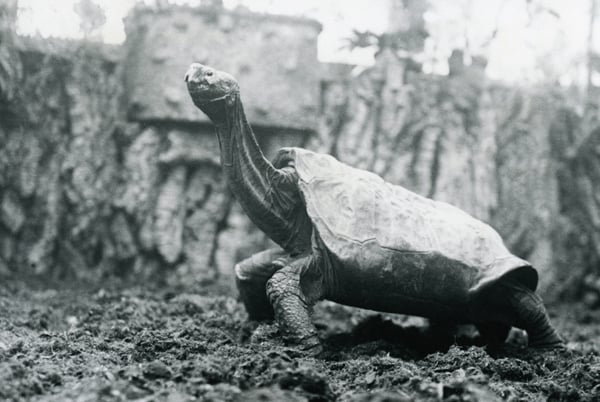
Male Abingdon or Pinta Island Giant Tortoise at London Zoo, 20th January 1914, Frederick William Bond (1887-1942) / Zoological Society of London
‘Lonesome George’ was a Galapagos conservation icon, but sadly the sole remaining Pinta Island tortoise died on 24 June 2012. Inscribed on his enclosure were the words, “Whatever happens to this single animal, let him always remind us that the fate of all living things on Earth is in human hands.”
3. Bees & Insects
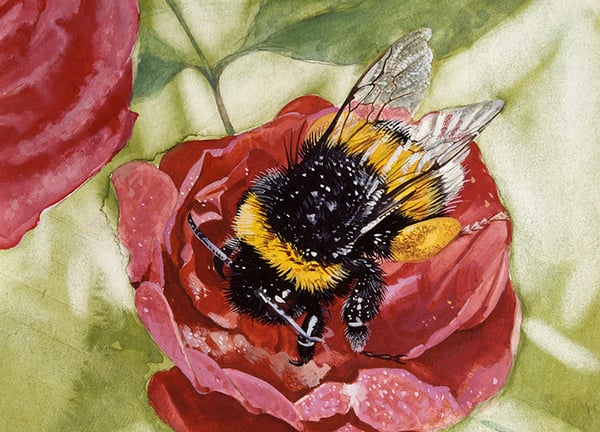 Buff-tailed Bumblebee or Large earth Bumblebee (Bombus terrestris), Apidae / Private Collection / De Agostini Picture Library
Buff-tailed Bumblebee or Large earth Bumblebee (Bombus terrestris), Apidae / Private Collection / De Agostini Picture Library
Fifty nine insect species are known to have vanished in our modern time, although in fact thousands are estimated to have disappeared. In particular, many countries around the world have documented a significant decline in the number of bee populations, including North America, China, Europe and Brazil.
The image of bees is often found in the heritage of various cultures and civilizations, embodying qualities such as wisdom, fertility, diligence, order and purity. The thought of losing an icon of such prosperity and vitality is truly saddening. The cause of their decline is not really known but pesticides, poor nutrition, viruses, parasites, and stress are often mentioned as the likely sources.
4. Rhinos
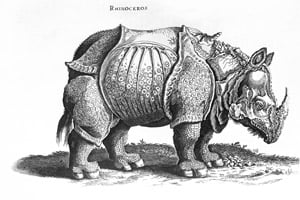
Rhinoceros, no.76 from ‘Historia Animalium’ by Conrad Gesner (1516-65) published in July 1815, Albrecht Durer (1471-1528) / Private Collection
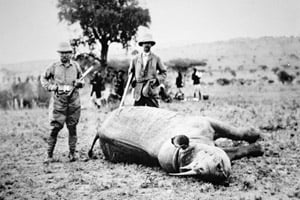
President Theodore Roosevelt with a white rhino during his post-presidential African safari, March 1910 / Peter Newark Pictures
In folklore this magnificent animal is often depicted as trying to enforce its own desires, using its size and weight to bully others, creating a stigma that the rhino is a stupid, cumbersome creature, unworthy of respect or protection.
Albrecht Dürer created a famous woodcut of a rhinoceros in 1515, based on a written description. Dürer’s image is less than accurate, depicting an animal covered with an armor of hard plates, scales on its feet, and a small spiral horn on its back. This is not exactly surprising, considering the artist never saw the actual specimen.
Rhinos as a collective have had a long history of endangerment. Not only is the northern white rhino facing inevitable extinction, but only a few weeks ago it was announced that the Sumatran Rhino is now extinct in Malaysia, with just 100 left in the wild in Indonesia. Between 1960 and 1995, it was estimated that a horrifying 98% of black rhinos were killed by poachers, mostly for their horns. The Western Black Rhino has been extinct since 1997, along with the Vietnamese Rhino in 2011.
4. Dolphins & Fish
Freshly caught Tuna laid out for auction at the fisheries harbor in Negombo, Sri Lanka. July 9, 2005./ Majority World / UIG
Asia is home to some of the most diverse habitats in the world, but it is believed that more than one in three species are endangered… and the figure is rising at an alarming rate. Underwater, the marine life is suffering from over-fishing, pollution and the destruction of crucial habitats, caused by the increased human population. As an example, South-east Asia currently supplies half of the world’s Tuna, but demand is far exceeding supply and stocks are in rapid decline.
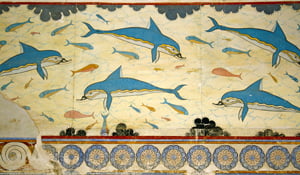
(From top) White Flag Dolphins, Elise Bostelmann (20th Century), National Geographic Creative; The Dolphin Fresco in the Queen’s Bathroom, Knossos, Crete 1550-1450 BC, Minoan / Knossos, Crete Prismatic Pictures
2007 saw both the Chinese paddlefish and the Yangtze River Dolphin become extinct, and it will not be long before other endangered fish, dolphins and whales suffer as well.
Dolphins are widely considered to be a very beautiful and fun-loving species and have appeared in art forms as early as 1500 BC, with the Minoan people associating dolphins with mythology. The extinction of such an intelligent and marvellous creature will be a true loss to the planet.
6. Asian and African Elephants
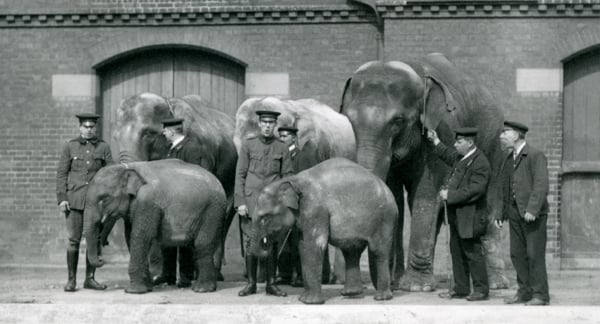
Asian Elephants with their keepers, including Charles Eyles, at London Zoo, April 1914, Frederick William Bond (1887-1942) / Zoological Society of London
Throughout history elephants have played a prominent role in human economies, religion and culture, and in some civilizations they were even regarded as gods.
Due to demand for ivory and habitat loss from human settlement, elephant populations have dramatically declined. In 1930 there were between 5-10 million African elephants, and today they are estimated at around 700,000, less than 1% of their original number. In the 1980s around 100,000 elephants were killed each year and up to 80% of herds were lost in some regions.
Asian elephants are even more endangered, as there are believed to be no more than 35,000-40,000 left in the wild.
7. Birds
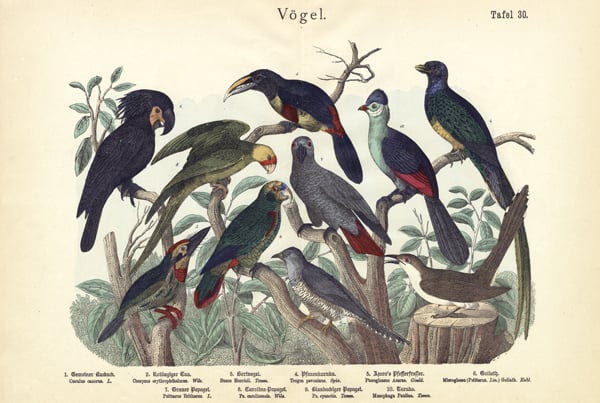
Birds, c.1860 (colour litho), German School, (19th century) / Private Collection / © Purix Verlag Volker Christen
Numerous varieties of birds have become extinct in the last century, including the Carolina Parakeet, the Nukupuu, the Aldabra Warbler and the Bush Wren.
The dodo is perhaps the earliest and most famous example of a creature that has become extinct; back in 1596 the flightless dodo was hunted by Dutch sailors as an easy snack, since its ungainly gait made it easy to catch. The animals that the sailors brought along also contributed to their demise, as they acquired a taste for dodo eggs.
It is not too late to save today’s even longer list of critically endangered birds, including the the California Condor, the Kakapo, the Kagu and Philippine Eagle.
Taking Action

A danger sign alerting to the presence of elephants, lions, leopards, buffalo, and rhinoceroses / Paul Sutherland / National Geographic Creative
Firstly, we need international bans on the importation of hunting trophies. Because of what happened to Cecil, over 1 million people signed a petition that successfully resulted in the wildlife authorities of Zimbabwe banning hunting of big cats and elephants around Hwange National Park.
It is now particularly important that a ban also be placed in the US, as the country that accounts for 64% of the market for lion parts. At the moment it looks promising that US lawmakers are in the process of drafting bills to discourage trophy hunting. The public needs to realise the severity of the damage that hunting or ignorant destruction of ecosystems can have on the Earth’s creatures. The cases shown here are just a mere handful of the animal species that have been threatened, and it is unfortunate to say that there are so many more. The WWF has a list of all the endangered animals, with more information on what you can do to help them.
Images for Licensing
Sources
- ‘African Lions Face Extinction by 2050, Could Gain Endangered Species Act Protection’. Scientific American. Retrieved 21.08.15
- ‘Cecil the Lion: Zimbabwe Hunter Bailed Over Killing‘. BBC News. Retrieved 21.08.15
- ‘Lonesome George’. Galapagos Conservancy. Retrieved 21.08.15
- ‘A Picture of Loneliness: You are Looking at the Last Male Northern White Rhino‘. The Guardian. Retrieved 21.08.15
- ‘Asia’s Endangered Species’. Underwater Asia. Retrieved 21.08.15
- ‘Asian Elephant and Africant Elephant’. Bagheera. 24.08.15
- ‘Why the Dodo Went Extinct’. Today I Found Out. Retrieved 21.08.15
- ‘Here’s Every Single Animal that Became Extinct in the last 100 years’. Pixable. Retrieved 21.08.15

